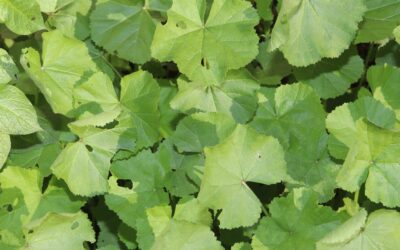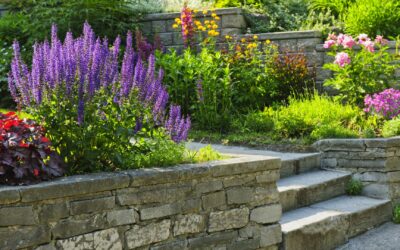Mallow weed is a common problem for commercial facility and property managers, quickly taking over landscapes if not properly controlled. These pesky weeds can be identified by their round, fuzzy leaves and small pink or white flowers. In this ultimate guide, we'll...
Recent Posts
The Landscaper’s Guide To Plant Growth Regulators
Landscapers often struggle with controlling plant sizes and health. Plant Growth Regulators (PGRs) are organic compounds that modify plant growth. This article will guide you in using PGRs to solve common landscaping challenges. Read on for a landscaper's guide to...
How Lawn Pest Control Enhances Overall Landscape Health
According to recent research by the University of Princeton, lawns account for over 40 million acres of American land today. Maintaining a lush, green space is more than just a matter of aesthetics; it's about creating a healthy, sustainable outdoor environment. One...
Do you want commercial landscaping that packs a punch?
A layered yard could be the answer as it adds depth and cohesion to your outside space. You use different heights for plants and planting areas. But if you’ve never heard of layering, this could just sound like meaningless words.
We can help break it down! Keep reading for these tips on how to create a layered landscape your clients will love.
What is a Layered Landscape?
Layering landscaping is where you interplant different heights and species to create layered interest. These layers create ongoing excitement and, if you get it right, non-stop color.
From spring to fall, your garden is alive with activity and life. You can also add evergreen trees and shrubs to keep that color through winter too. But to get the optimal effect, you need to make sure these plants blend.
From the back to the front and on both sides, it has to be cohesive. Different shapes, textures, heights, and colors should all work together.
Strive For Balance
This will be one of the most daunting layered landscape tips, but you have to get the balance right. To help with this, add a layer or two that will be repetitive and consistent in its planting. To do this, plant the same or similar plants in rows or groups for that grounding element.
Keep the Space in Mind
Make sure you give careful consideration to the space and how you will use and maintain the landscaping. If you don’t have height restrictions, you could use some larger evergreen trees or shrubs to provide drama.
The space will dictate how many layers you can include. Make sure you measure and consider what spacing needs each plant has too. This will help determine the species, number, and material type you use.
Make Sure Depth Stretches Between Layers
For layered landscape creation, use textures, colors, and sizes to create more depth. Even if you only want a green look that lasts all year, mix up the shades.
Use darker and lighter greens and also textures that will give a 3D finish. Some of the most dramatic, beautiful gardens only use texture and shades. It’s an elegant and sophisticated method.
Layer 1: Background
The background should be where you place your biggest trees and shrubs. These will block views into your yard and also provide shade.
To create balance here, it’s best to use shrubs and evergreen trees with dense foliage. This ensures privacy year-round and creates a more dramatic backdrop for the plants in front.
Layer 2: Midground
The midground layers(s) will feature plants ranging from 6ft to 2ft, depending on your back layer. These will be:
- Medium-large shrubs
- Tropical shrubs
- Smaller hedges
- Dwarf shrub and tree varieties
The middle layer(s) will take up most of the landscaping space and fills up the area. Consider spacing here with care, so you avoid bare patches.
Layer 3: Foreground
This is your front layer and will use plants between 1ft and 2ft in height. You’ll want to use small shrubs, annuals, and smaller tropical plants.
You can use these in large quantities and fill in any gaps caused by your midground. You can also let them start to spill to the front, providing some ground cover.
Layer 4: Ground
This is the lowest layer and includes turf and plants no more than 12 inches high. You want plants here to be strong at compact growth.
They can be annuals, low perennial as well as ground cover. Your aim here is to blend and protect sidewalks/lawns with a seamless buffer.
Get the Layered Landscape You’ll Love
Getting a layered landscape takes a little planning, but the rewards are worth it. Think about your space and start to plan out the layers.
Sort out your back layer, then work forwards using height, texture, and color. A well-cared-for landscape can transform a commercial space and how people view it.
If you want to spruce up your space, contact us today. At Sunrise Landscape, our expert team is ready to help with all your commercial property needs.
Contact Us
"*" indicates required fields
Recent Posts
Mallow Weed Control: The Ultimate Guide
Mallow weed is a common problem for commercial facility and property managers, quickly taking over landscapes if not properly controlled. These pesky weeds can be identified by their round, fuzzy leaves and small pink or white flowers. In this ultimate guide, we'll...
The Landscaper’s Guide To Plant Growth Regulators
Landscapers often struggle with controlling plant sizes and health. Plant Growth Regulators (PGRs) are organic compounds that modify plant growth. This article will guide you in using PGRs to solve common landscaping challenges. Read on for a landscaper's guide to...



